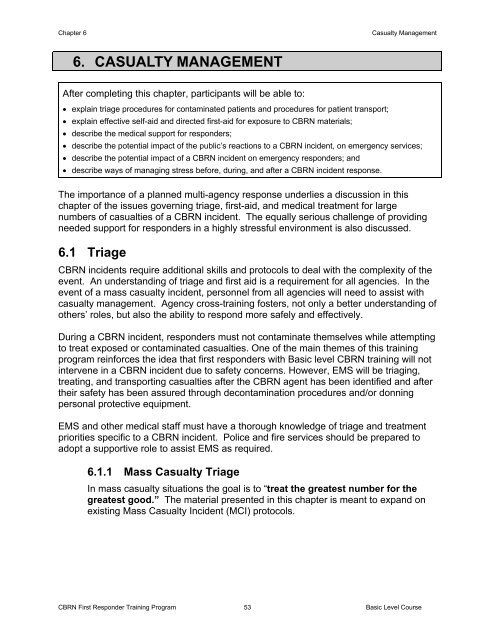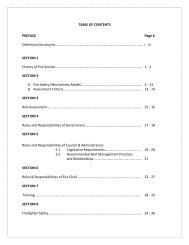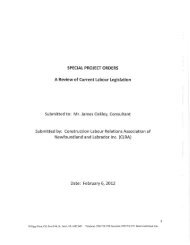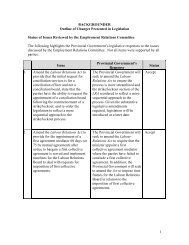Basic Level Pre-Course Reading
Basic Level Pre-Course Reading
Basic Level Pre-Course Reading
Create successful ePaper yourself
Turn your PDF publications into a flip-book with our unique Google optimized e-Paper software.
Chapter 6<br />
Casualty Management<br />
6. CASUALTY MANAGEMENT<br />
After completing this chapter, participants will be able to:<br />
• explain triage procedures for contaminated patients and procedures for patient transport;<br />
• explain effective self-aid and directed first-aid for exposure to CBRN materials;<br />
• describe the medical support for responders;<br />
• describe the potential impact of the public’s reactions to a CBRN incident, on emergency services;<br />
• describe the potential impact of a CBRN incident on emergency responders; and<br />
• describe ways of managing stress before, during, and after a CBRN incident response.<br />
The importance of a planned multi-agency response underlies a discussion in this<br />
chapter of the issues governing triage, first-aid, and medical treatment for large<br />
numbers of casualties of a CBRN incident. The equally serious challenge of providing<br />
needed support for responders in a highly stressful environment is also discussed.<br />
6.1 Triage<br />
CBRN incidents require additional skills and protocols to deal with the complexity of the<br />
event. An understanding of triage and first aid is a requirement for all agencies. In the<br />
event of a mass casualty incident, personnel from all agencies will need to assist with<br />
casualty management. Agency cross-training fosters, not only a better understanding of<br />
others’ roles, but also the ability to respond more safely and effectively.<br />
During a CBRN incident, responders must not contaminate themselves while attempting<br />
to treat exposed or contaminated casualties. One of the main themes of this training<br />
program reinforces the idea that first responders with <strong>Basic</strong> level CBRN training will not<br />
intervene in a CBRN incident due to safety concerns. However, EMS will be triaging,<br />
treating, and transporting casualties after the CBRN agent has been identified and after<br />
their safety has been assured through decontamination procedures and/or donning<br />
personal protective equipment.<br />
EMS and other medical staff must have a thorough knowledge of triage and treatment<br />
priorities specific to a CBRN incident. Police and fire services should be prepared to<br />
adopt a supportive role to assist EMS as required.<br />
6.1.1 Mass Casualty Triage<br />
In mass casualty situations the goal is to “treat the greatest number for the<br />
greatest good.” The material presented in this chapter is meant to expand on<br />
existing Mass Casualty Incident (MCI) protocols.<br />
CBRN First Responder Training Program<br />
53<br />
<strong>Basic</strong> <strong>Level</strong> <strong>Course</strong>

















